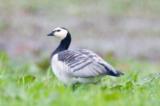 © Pete Saloutos/Panoramic Images (Washington Title Image Large)
© Pete Saloutos/Panoramic Images (Washington Title Image Large)

Corridors in Washington
What are ecoregions?
Ecoregions reflect broad ecological patterns occurring on the landscape. In general, each ecoregion has a distinctive composition and pattern of plant and animal species distribution. Abiotic factors, such as climate, landform, soil, and hydrology are important in the development of ecosystems, and thus help define ecoregions. Within an individual ecoregion, the ecological relationships between species and their physical environment are essentially similar.
Why use ecoregions?
Using ecoregions as a framework for assessing the distribution and status of species and ecosystems makes biological sense, compared to using politically derived lines like county, state or national boundaries. Ecoregions also provide an ecological basis for partitioning the state into subunits for conservation planning purposes.
What ecoregions occur in Washington?
Washington’s borders contain portions of nine ecoregions, each of which is described on the following pages. These descriptions are intended to provide the reader with a snapshot of each ecoregion, and the statements regarding biodiversity highlights and conservation needs are not meant to be comprehensive.






